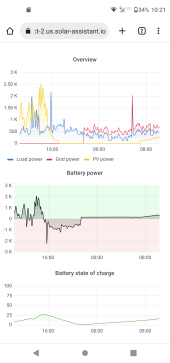Light bulb moment.
There is a way that this could be solved if the AIO manufacturers incorporated it. At battery low voltage set point instead of going into shutdown the unit could check for AC power and engage DC charging at a low amperage enough to maintain AIO operation and above battery low voltage cutoff. Note: this is different than using set amperage charging while in AC pass through. (many do not want to charge from AC so operate in PV only charge mode). It would pass off AIO's power needs to the AC side until PV charging had raised battery voltage sufficient enough to go out of AC Bypass.
There is a way that this could be solved if the AIO manufacturers incorporated it. At battery low voltage set point instead of going into shutdown the unit could check for AC power and engage DC charging at a low amperage enough to maintain AIO operation and above battery low voltage cutoff. Note: this is different than using set amperage charging while in AC pass through. (many do not want to charge from AC so operate in PV only charge mode). It would pass off AIO's power needs to the AC side until PV charging had raised battery voltage sufficient enough to go out of AC Bypass.





